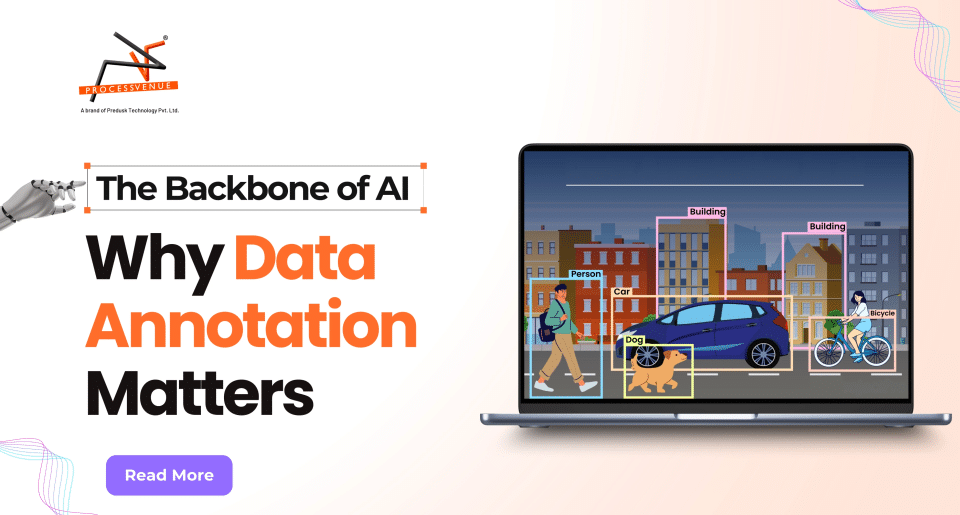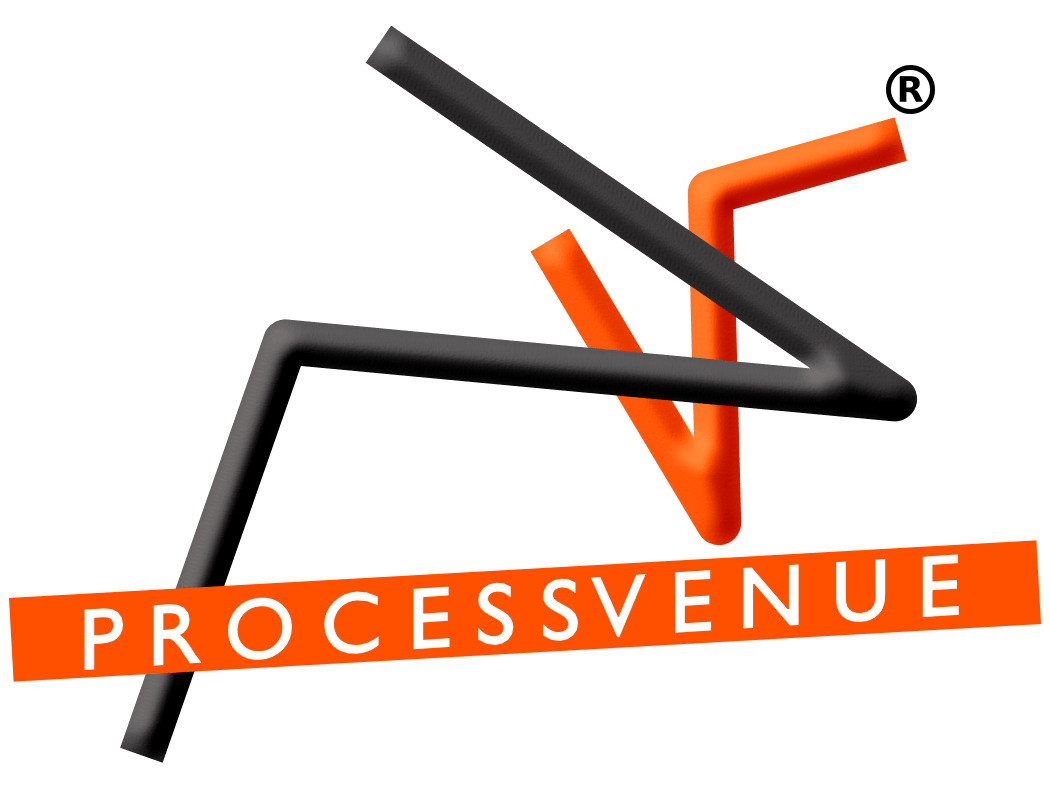
The Backbone of AI: Why Data Annotation Matters
|
Getting your Trinity Audio player ready...
|
Place yourself in this scenario: you’re sitting in a self-driving car, approaching a busy intersection. A bright red “STOP” sign is in plain view, yet the car mistakenly interprets it as a “YIELD” sign. Instead of halting, it cruises ahead, creating a life-threatening situation. As unsettling as it sounds, this is exactly what happens when an AI system is trained without properly labeled data. The algorithms may be advanced, but without guidance, they remain blind to meaning.
This scenario highlights a truth at the heart of artificial intelligence: algorithms, no matter how advanced, are only as good as the datasets they are trained on. And at the foundation of these datasets lies something often overlooked yet indispensable—Data Annotation.
Data Annotation: The Unsung Hero of AI
If AI models are like brilliant orators, then data annotation is the invisible speechwriter—crafting words, refining the meaning, and giving direction. Just as a leader’s speech loses impact without clear writing, AI systems fail without accurate data labeling.
Data annotation is the foundation layer of any intelligent system. Without it, algorithms remain blind calculations with no context. A recent Gartner report stated that 80% of AI project time is spent preparing and labeling data, underscoring the sheer importance of data annotations in shaping successful AI outcomes.
Despite being the backbone of AI development, annotation rarely gets the limelight. Yet, every breakthrough in autonomous driving, medical diagnostics, fraud detection, or chatbots has one thing in common: precisely labeled datasets.
What Exactly is Data Annotation?
Put simply, data annotation is the process of labeling raw information—text, images, audio, or video—so AI models can understand and learn from it.
Key types include:
- Text Annotation Services – Tagging intent in customer queries, classifying sentiment in reviews, or annotating named entities for natural language processing (NLP).
- Video Annotation Services – Frame-by-frame labeling of objects such as cars, pedestrians, or cyclists to train autonomous vehicles.
- Image Labeling Services – Drawing bounding boxes or segmenting regions so computer vision systems can identify objects with accuracy.
- ML Data Annotation Services – A broader category, covering structured datasets across industries like healthcare, finance, or e-commerce.
Without these carefully labeled inputs, AI training lacks structure—like trying to learn a language with no dictionary. These services transform raw, unstructured data into structured, contextual information—fueling AI training with knowledge it needs to perform effectively.
Why It Matters: The Real-World Impact
The benefits of data annotations extend far beyond accuracy; they shape the safety, fairness, and effectiveness of AI.
- Healthcare: Annotated medical scans help AI systems detect tumors or anomalies earlier than human eyes—potentially saving lives. Annotated radiology scans enable AI to detect anomalies like cancer at earlier stages, improving survival rates. A Stanford study showed AI models trained on well-labeled datasets can rival human radiologists in spotting pneumonia.
- Autonomous Vehicles: Video annotation services train cars to differentiate between a pedestrian stepping off a curb and a shadow on the road.
- Customer Support: Text annotation services enable chatbots to understand intent, improving customer satisfaction while reducing costs.
On the flip side, poor annotation can lead to bias, errors, and unsafe AI. A mislabeled dataset could make a healthcare AI overlook critical symptoms, or a poorly tagged facial recognition system could misidentify individuals—raising serious ethical and safety risks.
This makes high-quality AI data annotation not just important but essential for responsible AI deployment.
The Human Factor in Data Annotation
Even as AI tools automate parts of the annotation process, humans remain indispensable. Why? Because context, nuance, and fairness cannot be fully automated. For example:
- Judgment calls – Humans can decide whether a comment is sarcastic or serious—something machines still struggle with.
- Cultural nuance – Sentiment in text varies across cultures, and human annotators can detect context that machines miss such as understanding the correct context, idioms, or sentiment in text requires human insight.
- Bias reduction – Humans can identify and correct underlying biases in the data that AI systems might otherwise replicate or even magnify
This Human + AI (HAI) approach ensures that datasets are not only scalable but also nuanced, fair, and contextually correct. This balance is at the heart of the Human + AI (HAI) model, where annotation is refined collaboratively. Human oversight makes datasets more accurate, while AI speeds up repetitive labeling tasks—together producing scalable, reliable, and bias-aware datasets. Machines handle volume; humans provide wisdom.
Processvenue’s Point of View
At Processvenue, we believe the future of AI doesn’t rest solely on code—it equally rests on the quality of data that brings that code to life. We recognize that data annotation for machine learning is more than just labeling—it’s about making datasets AI-ready.
Our specialized teams, operating from India’s growing tech hubs and towns, deliver secure, scalable, and accurate data annotation services across domains. From text annotation services for customer experience to video annotation services for autonomous driving, we provide solutions with a HAI approach.
Mini Client Scenario:
A fintech client approached Processvenue to build a fraud detection model. The challenge was inconsistent transaction labeling, which hampered AI training. By leveraging our ML data annotation expertise, we created a consistent, bias-free dataset. The result? Faster fraud detection, reduced false positives, and improved customer trust.
Our positioning is simple:
“We don’t just annotate data—we make it AI-ready with accuracy, scale, and security.”
Closing Vision
The future of AI doesn’t rest solely on algorithms; it depends on the quality of data annotation behind them. For startups and enterprises alike, investing in data labeling services today lays the foundation for competitive, trustworthy, and scalable AI tomorrow.
Talk to ProcessVenue today to explore how our AI data annotation services can transform your datasets into a strategic advantage.
FAQs
Q1. What is data annotation, and why is it important for AI training?
Data annotation is the process of labeling raw data (text, image, video, audio) so AI models can interpret and learn from it. It is crucial because without accurate annotation, AI systems cannot understand context or make reliable predictions.
Q2. What are the main types of data annotation services?
The key types include text annotation services, video annotation services, image labeling services, and ML data annotation services, each tailored for different industries and applications.
Q3. How does poor annotation affect AI performance?
Inaccurate or biased annotations can lead to flawed AI models. For example, in healthcare, it may cause misdiagnosis, while in autonomous vehicles, it could lead to unsafe driving decisions.
Q4. Why choose Processvenue for data annotation services?
Processvenue offers secure, scalable, and high-quality data annotation services backed by trained teams. We focus on delivering datasets that are not just labeled, but AI-ready—ensuring accuracy, fairness, and faster model deployment.
